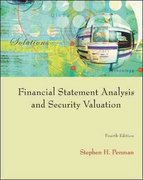Question
Simulation and Modeling Lab: Question 12: At the Pilot Pen Company, a moulding machine produces pen barrels of two different colours red and blue in
Simulation and Modeling Lab: Question 12: At the Pilot Pen Company, a moulding machine produces pen barrels of two different colours red and blue in a ratio of 3:2. The moulding time is triangular (3,4,6) minutes per barrel. The barrels go to a filling machine, where ink of appropriate colour is filled at the rate of 20 pens per hour (exponentially distributed). Another moulding machine makes caps of the same two colours in the ratio of 3:2. Te moulding time is triangular (3,4,6) minutes per cap. At the next station, caps and filled barrels of matching colours are joined together. The joining time is exponentially distributed with a mean of 1 minute. Simulate for 2,000 hours. Find the average number of pens produced per hour. Collect the statistics on the utilization of the moulding machines and the joining equipment. Queue lengths: Filling Queue: 37.5 feet; Blue Cap Queue: 16 Feet and Red Cap Queue: 21.5 feet. Arrivals set First Time to Blank (no value). Enitities: Barrel, Cap, Barrel_Red, Barrel_Blue, Cap_Red, Cap_Blue, Red_Pen, Blue_Pen Question 9: Small toys are assembled in four stages (centres 1, 2, and 3 and Inspection) at the Bengal Toy Company. After each assembly step, the appliance is inspected or tested; if a defect is found, it must be corrected and then checked again. The assemblies arrive at a constant rate of one assembly every two minutes. The times to assemble, test and correct defects are normally distributed. The mean and standard deviations of the time to assemble, inspect and correct defects as well as the likelihood of an assembly error, are shown in table L4.9 (See the table below). If an assembly is found defective, the defect is corrected and it is inspected again. After a defect is corrected, the likelihood of another defect being found is the same as during the first inspection. We assume in this model that an assembly defect is eventually corrected and then it is passed on to the next station. Simulate for 2,000 Hours (1 year). a) Determine the number of good appliances shipped in a year. b) What is the utilization of each assembly centre and the inspection station. c) How could you keep track of the number of defects for each centre? Assembly Time Inspect Time Correct Time Centre Mean Standard Mean Standard P(error) Mean Standard Deviation Deviation Deviation 1 0.7 0.2 0.2 0.05 0.1 0.2 0.05 2 0.75 0.25 0.2 0.05 0.05 0.15 0.04 3 0.8 0.15 0.15 0.03 0.03 0.1 0.02
ahmed1413 posted a questionOct 23, 2016 at 9:48pm
View the entire interaction
Top Answer
Please accept...View the full answer
ATTACHMENT PREVIEWDownload attachment
Solution12,9.doc
Solution...... (12) From next figures: Pens/hour = 4043/800 = 5.05 Molding machine for pen barrels % Util. 97.32 Molding machine for caps % Util. 100.00
Step by Step Solution
There are 3 Steps involved in it
Step: 1

Get Instant Access to Expert-Tailored Solutions
See step-by-step solutions with expert insights and AI powered tools for academic success
Step: 2

Step: 3

Ace Your Homework with AI
Get the answers you need in no time with our AI-driven, step-by-step assistance
Get Started


